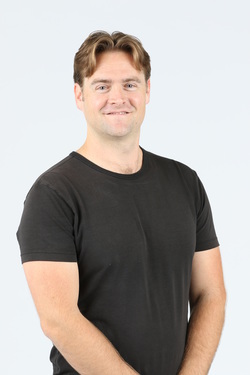And these tight pecs aren't just a common problem, they are also one of the three major root causes of problems throughout the entire body. Tight pecs pull the shoulder blades forward and disrupt our posture. They are the single biggest factor in most people's postural problems. They round the shoulders forward, and are thus the root cause of many shoulder and arm pains. They pull the neck forward, and are thus the root cause of much neck pain. And they force the low back to compensate into a sway pack position, making them a root cause of many low back problems. It's hard to overstate just how important the pecs are, and just how devastating they can be for the entire body when tight.
Hardness is a good image for these muscles. We need to think about softening them. Vigorous stretching and assaulting these muscles with a hard massage will not help. In fact, attacking these muscles will often make them harden even more. It's best to think about softening them. We need them to relax.
The best way to relax these muscles is a gentle self-massage followed by the Belly Flopper exercise. Rub the chest muscles gently for about two minutes each. Be gentle! The idea is to relax the muscle, not bruise it. If it doesn't hurt at all and if you're concerned that your wasting your time, then you're probably doing it right. After massaging the muscles, do the Belly Flopper.
The Belly Flopper does two things: it relaxes the chest muscles while simultaneously strengthening the opposing muscles. The relaxation is accomplished by Reciprocal Inhibition, which is just a fancy word for the reflexive relaxation that occurs to muscles when their opposing muscles contract. The Belly Flopper helps to relax the chest muscles while also helping to stabilize the shoulder blades for a more permanent effect on these muscles.
Try this simple routine daily this month and see what effects it has on your posture and on any aches and pains in your body. It can make remarkable changes throughout the entire body. Watch especially for more neck, shoulder, and low back comfort and flexibility.
To learn more about how to care for your entire body, register for my seminar on 8/20/2016: Unlocking the Body.



 RSS Feed
RSS Feed
